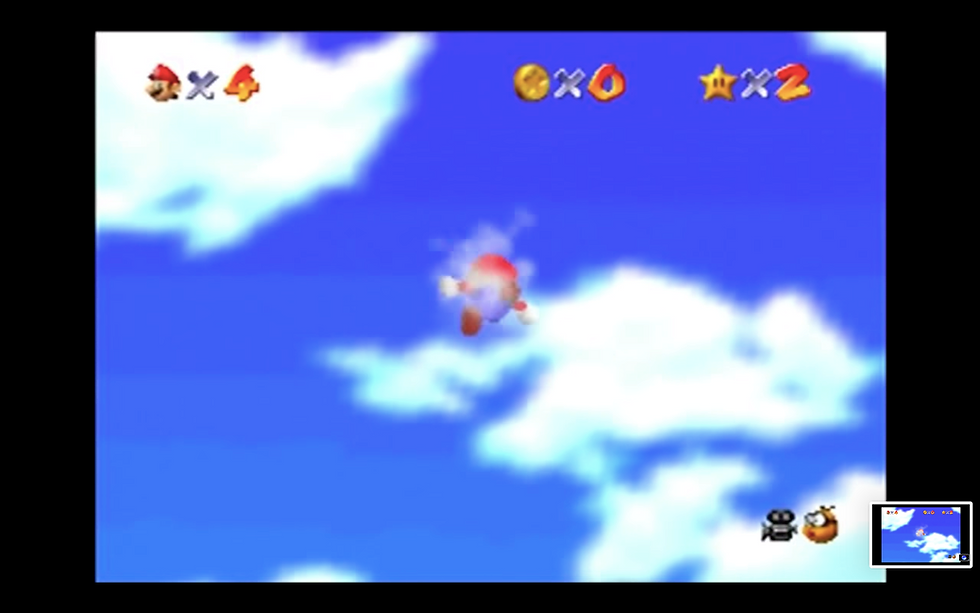Retro Game Review: Wario Land: Super Mario Land 3 (1994)
- Catherine An

- Oct 18, 2019
- 3 min read
Released first in Japan for the Game Boy in 1994 following two Super Mario Land games, Wario Land: Super Mario Land 3 shifts the gamer’s focus from Mario, the perceived protagonist, and shines a spotlight on the prevailing “antagonist,” Wario, who has been established as Mario’s rival. This reversal of perspective from the “protagonist” to the “antagonist” complicates Wario’s role as the villain and sheds light on the consequences of Mario’s actions. Although this is not made clear explicitly until near the end of the game, Wario recovers coins throughout the game to rebuild his castle, which had been destroyed by Mario previously in Super Mario Land 2.
Wario Land shares the familiar mechanics of Super Mario, with some minor add-ons that differentiate Wario from his rival. Besides also having the ability to jump, run towards the left or the right, shrinking from normal size when hit by enemies and hit blocks that offer coin rewards or power ups, regular sized Wario can smash blocks by running into them. Similarly, this running action can also bump and “take out” enemy pawns if timed correctly. Wario's abilities seem more brutish compared to that of Mario's. Additionally, Wario’s power up items also look different than that of Mario’s. Instead of Mario’s 1-up mushrooms, Wario has what appears to be garlic, reinforcing his less likeable image as the villain, even though he is meant to be the protagonist in this game. Despite the contrast, the similarities in the game mechanic puts Wario in the same position as Mario in the previous Super Mario Land games. The player experiences the world as Wario; yet, the cheerful beeping music and the unrealistic shape of the characters help detach the player from sympathizing with the character in the game. This motif extends from the Super Mario games to Wario’s narrative, painting Wario Land as if it shared the same Mario Land objectives, even though this game provides a different side to Mario’s original story.
The similarities between Mario’s world and Wario’s world offer little distinction to highlight the shift in perspective in the game. The gamer might only focus on how gameplay remains the same and pay little attention to the change in story line and the challenge it places upon the consequence of Mario’s (a character they most likely have played as before this game) actions. This subtlety in the reversal of narrative is also reflected in the lack of explanations in the beginning of the game. Players first start the gaming experience by viewing a short clip of Wario sinking a pirate ship and seeing the floating corpse of a dead duck-like character. Wario is potrayed as the villain right from the beginning and his motivations are not revealed to players until near the end of the game. Players are immediately immersed by the familiar game mechanics of Mario and play the game without knowledge of Wario’s purpose. Even playing as Wario from the beginning of the game, I as a clueless player was led to believe that I was taking on the role of Wario as the evil rival of Mario, rather than Wario who is pursuing his own goals outside of his relationship to Mario The familiarity of the mechanic links players to associations with Mario as the protagonist; our memories of playing Super Mario are recalled and contribute to the experience of playing Wario Land.
Still, as the gameplay continues, we become more and more immersed in Wario’s world by becoming engaged in our experience playing as Wario. The game mechanics still reminiscent of Mario’s world, we begin to connect with Wario as we continuously witness him flail his arms hopelessly when losing a life: it is easiest to connect with Wario, someone perceived to be the evil antagonist, in his moments of vulnerability and weakness. As we enter deeper and deeper into the various worlds in the game, experiencing them as Wario allowed us to feel closer to the moving character on the screen. Mario’s narrative gradually ebbs away in our minds, and Wario emerges as a valiant lead.
Ultimately, Wario Land: Super Mario Land 3, offers insight on how prevalent our biases as players tend to associate with certain game mechanics and motifs---a theme that newer games like Braid utilizes and emphasizes. Wario Land begins to challenge the consequences of Mario’s violent actions on others, while still enabling Wario to commit violence of his own. Through this game, Wario, a perceived “villain,” has a chance to share his side of the story and the world of Mario becomes increasingly complex. Through enriching the background of the “antagonist,” the role of the “protagonist” is challenged. Both Mario and Wario are the “antagonists” in each other’s stories. Perhaps neither of them are the hero that the games seem to wish to suggest.
Works Cited:
Wario Land: Super Mario Land 3 Emulator: https://www.retrogames.cz/play_305-GameBoy.php?language=EN
“Wario Land: Super Mario Land 3.” Super Mario Wiki, www.mariowiki.com/Wario_Land:_Super_Mario_Land_3.




Comments